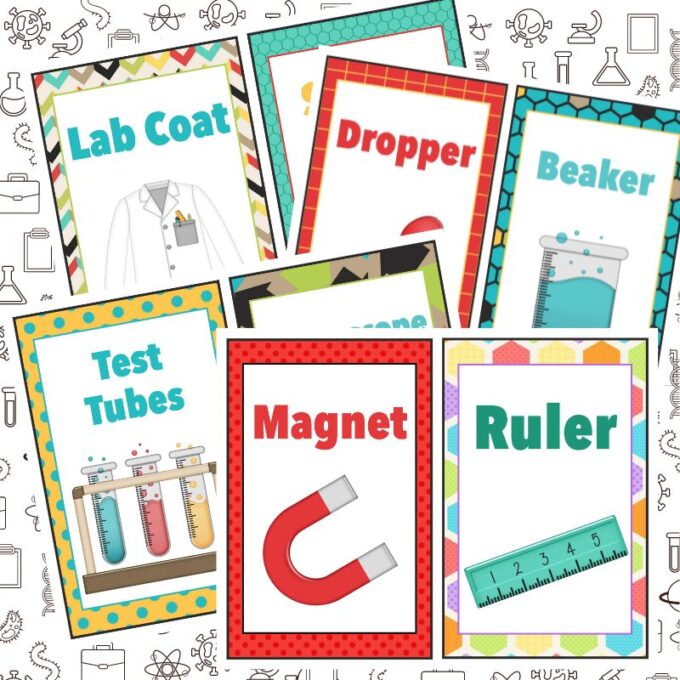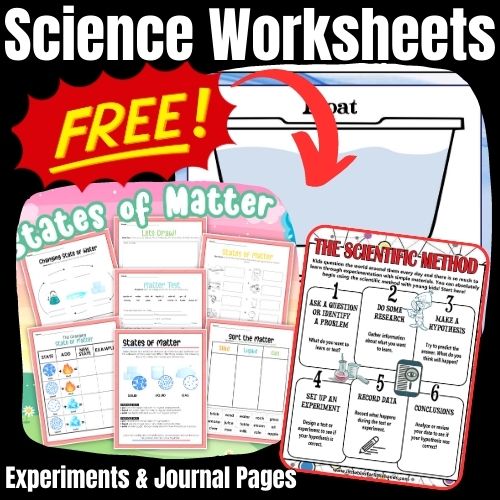Observation in science is using our senses to gather information about the world around us daily. It involves using science process skills, paying close attention to the details, making careful notes or drawings, and using tools to help us better observe.
Making observations is an essential skill in science because it allows us to collect data and gather evidence to support or refute hypotheses. Observing is a good way for kids to explore and learn about the natural world. Young children learn to apply past experiences when they observe new situations, especially with science and sensory experiences.
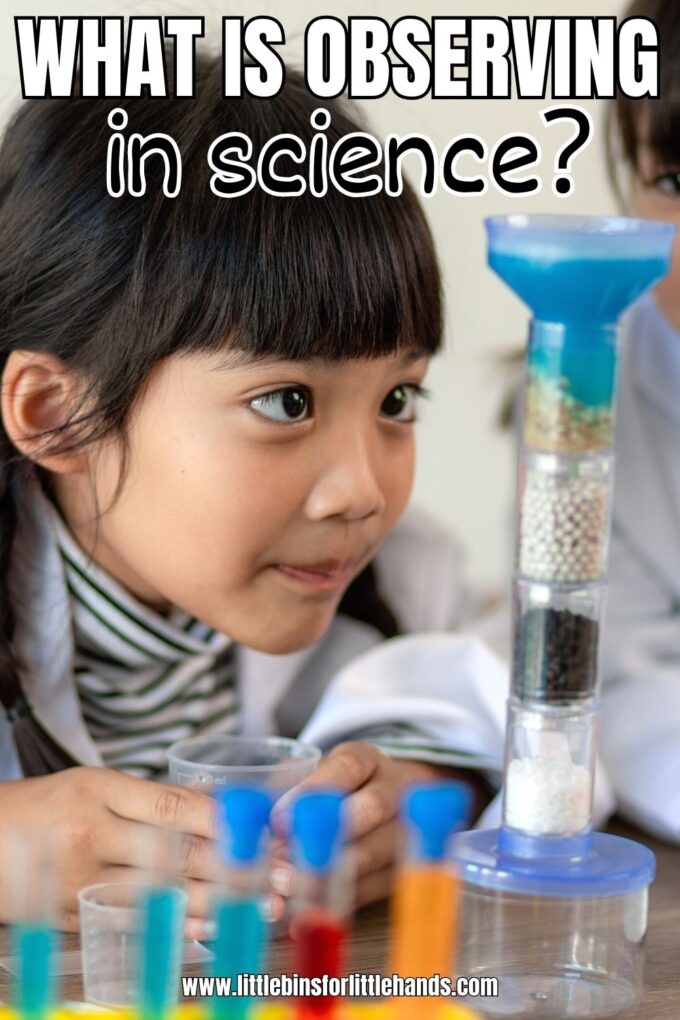
First Step: Start with a Scientific Question!
Kids are curious about everything and ask great questions. Scientific questions are inquiries that can be explored through scientific investigation and observation. These questions encourage curiosity, critical thinking, and problem-solving skills. Here are some examples of scientific questions suitable for kids:
- What makes plants grow taller: sunlight or water?
- How does the temperature affect the rate at which ice melts?
- Does the shape of a paper airplane affect how far it flies?
- What factors affect the speed of a rolling ball?
- Does the type of soil affect how fast seeds sprout?
- What materials float, and what materials sink in water?
- How does the color of light affect plant growth?
- Do different types of magnets have different strengths?
- Does the amount of sugar in a drink affect how quickly it dissolves?
- How does the height of a ramp affect the distance a toy car travels?

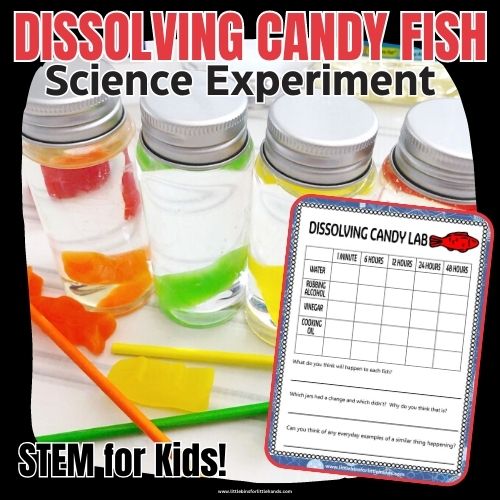

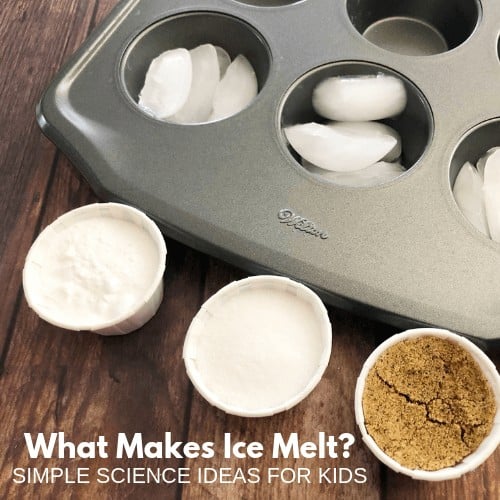
These open-ended questions lend themselves to experimentation and observation in different ways. They allow kids to form hypotheses, design experiments, and collect data to find answers through scientific investigations. It’s important to encourage kids to ask their own questions and guide them in the process of investigating and finding answers through scientific exploration.
You Might Also Like: 12 Day Jr Scientist’s Challenge

Observing leads to Scientific Knowledge
Scientific knowledge refers to the information, facts, and understanding of the natural world obtained through scientific inquiry, observation, and experimentation. It encompasses scientists’ discoveries and explanations over time to explain natural phenomena or processes. Kids gather scientific knowledge every day that they choose to explore and observe the world around them!
Free Scientific Process Pack
Get kids started with this free scientific process pack that includes posters, journal pages, and simple steps to follow. Use these with any of your favorite science experiments or activities.
Next, Plan a Scientific Investigation!
The scientific method is a systematic approach scientists use to investigate and understand the natural world. It involves steps that help scientists ask questions, make observations, form hypotheses, conduct experiments, analyze data, and draw conclusions. While the scientific method sounds complicated, it can be easy to use with kids. Here’s a breakdown of the scientific method for kids:
Find more information and examples on the Scientific Method for Kids here! Plus, learn more about variables and hypotheses and how to use it with young kids
Ask a Question: The scientific method starts with asking a question about something you want to understand or investigate. Encourage kids to ask open-ended questions that can be tested scientifically. For example, “What effect does the amount of sunlight have on plant growth?”
Do Background Research: Before conducting an experiment, gathering information and learning about the topic is helpful. Kids can read books, search online, or talk to experts to better understand what is already known about their questions.
Form a Hypothesis: A hypothesis is an educated guess or prediction that attempts to answer the question. Kids should make a statement that can be tested through experimentation. For example, “If plants receive more sunlight, then they will grow taller.” It is often an “if, then” statement.
Plan and Conduct an Experiment: This is where the hands-on part of science comes in. Kids should design an experiment that tests their hypothesis. They need to identify the variables involved—the factors that can change—and decide how they will measure and control those variables. For example, they can set up two groups of plants: one receiving more sunlight and the other receiving less sunlight. They should keep all other variables, such as water and soil, the same for both groups.
Collect and Analyze Data: During the experiment, kids need to collect and record data by carefully observing and measuring the experiment’s results. This data collection should be recorded in a table, chart, or notebook. After collecting the data, they can analyze it by looking for patterns or trends. They may use graphs or charts to help visualize their findings.
Draw Conclusions: Based on the data analysis, kids can draw conclusions about whether their hypothesis was supported or refuted. Encourage them to explain their findings and any unexpected results they may have encountered. They should consider whether the data is reliable and if there are any limitations to their experiment.
Communicate Results: Science is a collaborative process, so it’s important for kids to share their findings with others. They can create a poster, give a presentation, or write a report to communicate their experiment, results, and conclusions. This allows others to learn from their work and build upon it. Communication and writing skills are an important part of science experiments.
It’s worth noting that the scientific method is not always a linear process. You might prefer reading about our Best Science Practices.
It’s OK to change your hypothesis!
Sometimes, scientists need to go back and revise their hypotheses or repeat experiments to gather more data and even create new hypotheses. Encourage kids to be flexible and curious, embracing that failure or unexpected results can lead to discoveries and further questions.
By following the scientific method, kids can learn critical thinking, problem-solving, and how to make evidence-based decisions. It empowers them to explore the world and better understand how things work.
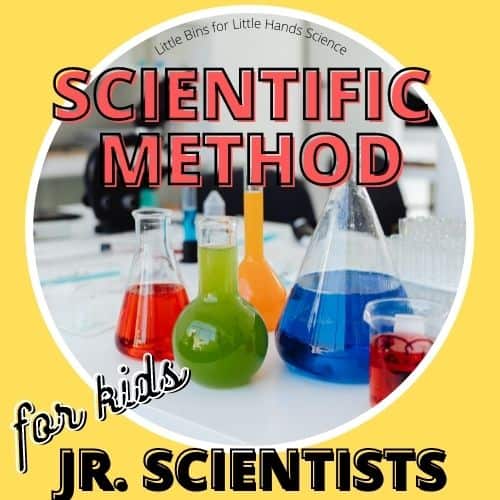
Observation in Science Starts with Our Five Senses
Scientific observation starts with our five senses: sight, hearing, touch, taste, and smell. By using these types of observations, kids can gather information about the characteristics and behavior of objects, organisms, and phenomena. Let’s take a closer look at how kids can observe using each of their own senses:
- Sight: Observing through sight involves looking closely at objects or organisms and noting their color, shape, size, and patterns. Kids can observe plants, animals, rocks, or even the movements of the stars in the night sky. They can use magnifying glasses or microscopes to examine small details that may not be visible to the naked eye. Start a seed jar or grow crystals!
- Hearing: Observing through hearing involves listening to sounds in the environment and identifying their sources. Kids can listen to bird songs, the rustling of leaves, or the sound of raindrops. By paying attention to the different pitches, rhythms, and volumes of sounds, they can make inferences about what is happening around them. Try a water xylophone sound experiment!
- Touch: Observing through touch involves using our sense of touch to explore the texture, temperature, and hardness of objects. Kids can touch different types of materials such as sand, water, feathers, or bark to understand their properties. By feeling the differences between smooth, rough, soft, or hard surfaces, they can describe and compare objects. Make oobleck!
- Taste: Observing through taste involves using the sense of taste to explore the flavors of different foods or substances. While it’s important to note that not everything can be tasted, kids can engage in simple experiments to compare the tastes of various fruits, candies, or liquids. They can describe the tastes as sweet, sour, bitter, or salty. Try fizzy lemonade or a Candy Taste Test!
- Smell: Observing through smell involves using our sense of smell to detect and describe odors. Kids can explore different scents in their environment, such as flowers, fruits, or spices. By sniffing and identifying smells, they can learn about the diversity of fragrances and how they relate to different objects. Make spice paint!
You Might Like: Color Taste Test Science Fair Project
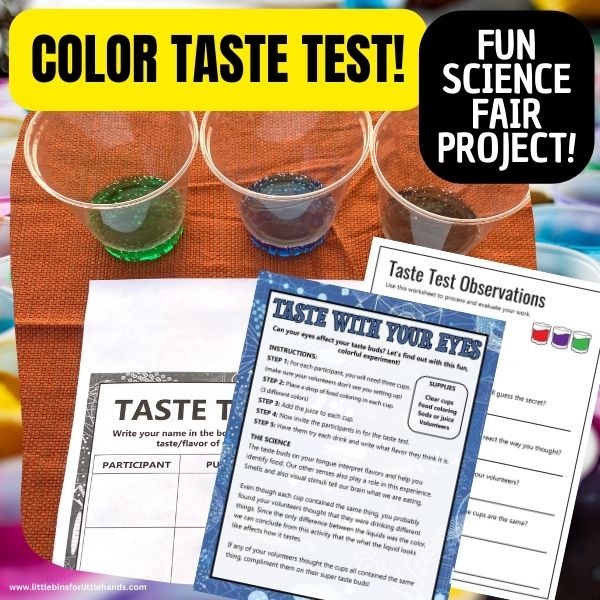
Helpful Scientific Tools for Observation in Science
In addition to using their senses, kids can enhance their observations using scientific tools. Here are a few examples:
As an Amazon Associate, I earn from qualifying purchases.
- Magnifying glasses: These tools can help magnify small objects or details, allowing kids to observe minute features that may be difficult to see.
- Binoculars: Binoculars can observe objects or animals from a distance. Kids can study the behavior of birds, spot details on faraway landscapes, or observe celestial bodies like the moon or stars.
- Thermometers: Thermometers measure temperature and can be used to observe changes in temperature over time or in different locations. Kids can track and compare the temperatures of different objects or areas.
- Microscopes: Microscopes are powerful tools that enable kids to observe tiny structures, such as cells or microorganisms. They can explore the intricate details of plants, insects, or other microscopic organisms.
- Cylinders, Beakers, and Pipettes: These scientific tools are perfect for observing experiments and engaging in hands-on science projects.
- Magnetic Kit: Learning about magnets and how they work with everyday experiences is essential for young kids.
- Cameras: Cameras (or smartphones) allow kids to capture images or videos of what they observe, creating a visual record that can be examined later or shared with others. Photos can document changes, compare observations, or create scientific presentations.
Observing in science is about seeing things and asking questions, making predictions, and recording data accurately. Grab this free Science Tools and Posters pack!
Observation in Science is a Skill
Observing things is a skill that can be fostered at a young age and will grow with your kids as they get older. As kids get older, their focus and patience with observation will increase, as will the other areas, but it will take time and practice!
To become skilled observers, kids should practice the following techniques:
- Focus: Encourage kids to concentrate on the object or phenomenon they are observing, blocking out distractions and paying attention to details.
- Patience: Some observations may require waiting for changes to occur, such as watching a plant grow or observing the behavior of animals. Kids should learn to be patient and persistent in their observations.
- Comparisons: Encourage kids to compare their observations to establish patterns, identify differences or similarities, and draw conclusions.
- Note-taking: Kids should record their observations and data collection in a notebook or journal. They can write descriptions, draw sketches, or even take measurements. This helps them organize their thoughts and is a reference for future comparisons. Use our free journal pages to create a science notebook.
- Objectivity: Observations should be objective, meaning that they should be based on facts rather than personal opinions. Kids should describe what they see or hear without adding their own interpretations.
Observing in science involves using their senses and scientific tools to gather information about the world around them. Kids can better understand the natural world and engage in scientific inquiry by honing their observation skills. Encouraging curiosity, careful observation, and accurate record-keeping can foster a lifelong love of science and exploration.
You might like: Starting a collection is a fun way to practice observational skills! Grab this free Be a Collector Pack to get started collecting anything!
Simple Observation Activity Idea
For young kids, pick out a grow animal from the dollar store. Ask them what they think will happen when you put the animal in water or how big it will get. This is the foundation for creating a hypothesis. Can they think of past experiences that might help determine an outcome?
Set up a scientific investigation to test the hypothesis! Gather scientific tools such as a magnifying glass, ruler, tongs, and paper/pencil. Have fun. Observe what happens over time, record data by measuring and drawing, and talk about what happened or draw conclusions. It’s that easy for young kids!
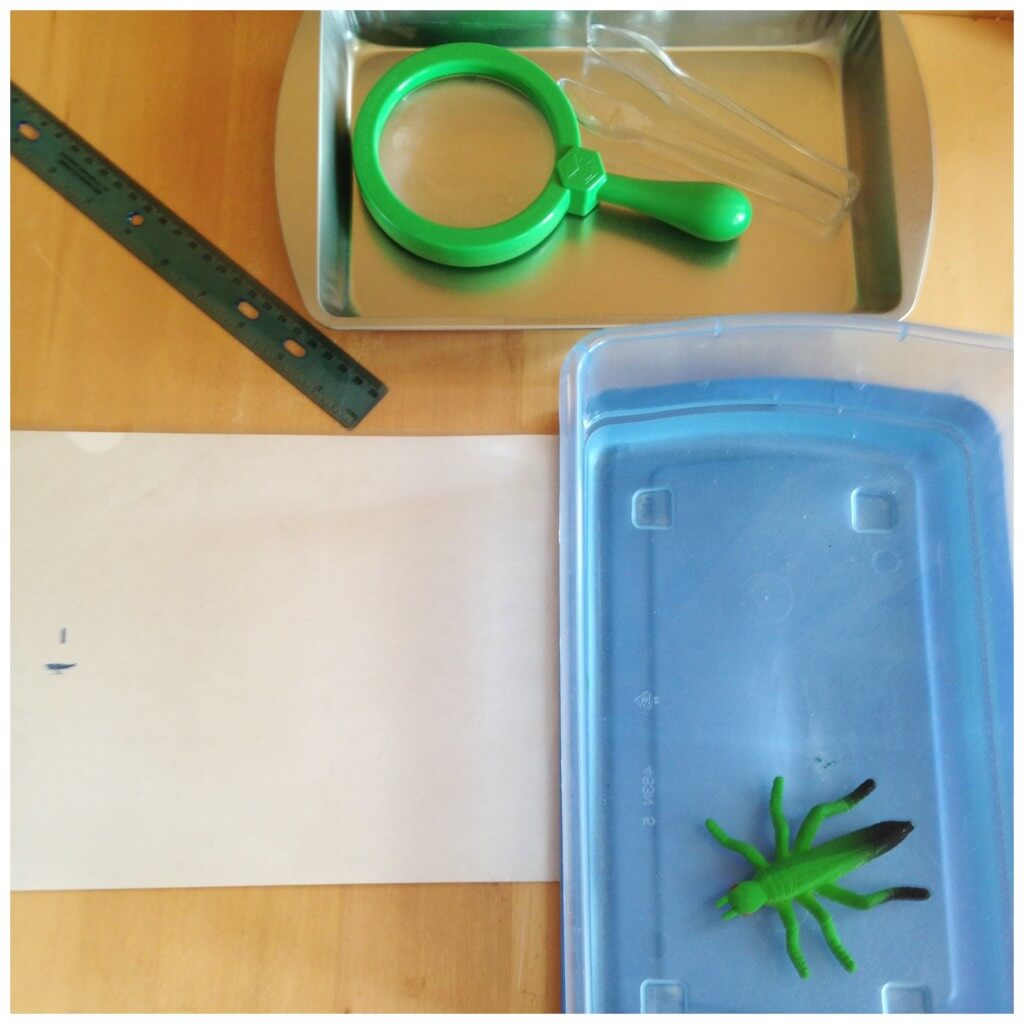
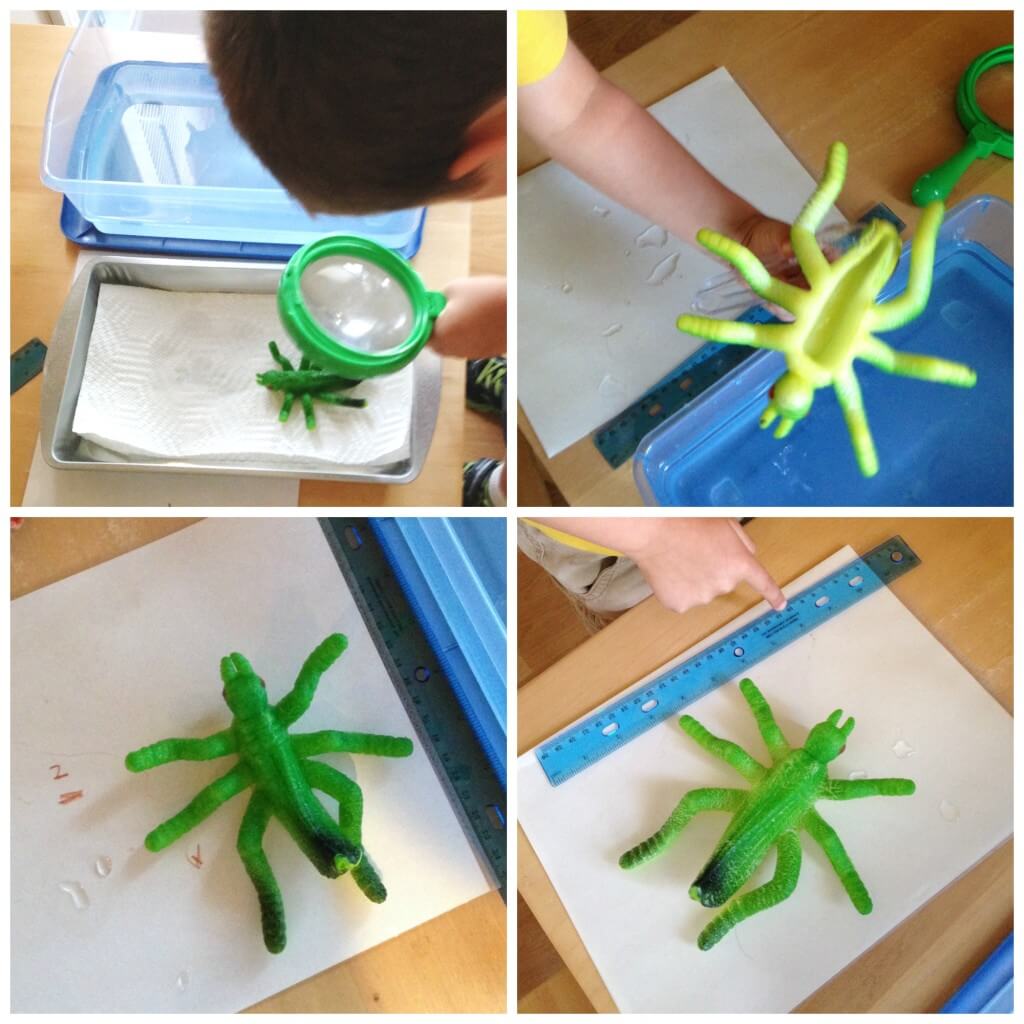
Printable Science Pack
Work on observing with 90+ fantastic science experiments and projects! If you’re looking to grab all of our printable science projects in one convenient place, plus exclusive worksheets and bonuses like a STEAM Project pack, our Science Project Pack is what you need! Over 300+ Pages!
- 90+ classic science activities with journal pages, supply lists, set up and process, and science information. NEW! Activity-specific observation pages!
- Best science practices posters and our original science method process folders for extra alternatives!
- Be a Collector activities pack introduces kids to the world of making collections through the eyes of a scientist. What will they collect first?
- Know the Words Science vocabulary pack includes flashcards, crosswords, and word searches that illuminate keywords in the experiments!
- My science journal writing prompts explore what it means to be a scientist!!
- Bonus STEAM Project Pack: Art meets science with doable projects!
- Bonus Quick Grab Packs for Biology, Earth Science, Chemistry, and Physics



